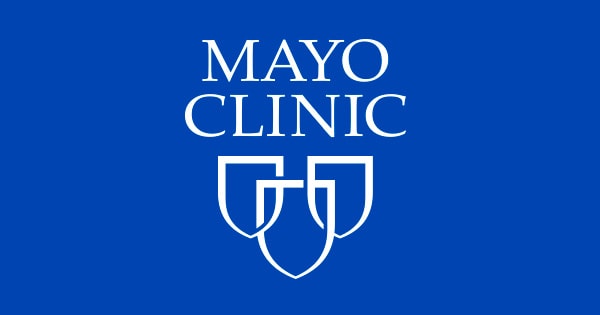Given the expansive contemporary role of statins for primary cardiovascular (CVD) prevention, the language in the new US Preventive Services Task Force draft guidance on their use in that setting may seem conservative. Even so, the proposed recommendations, open to public comment until March 21, take more recent data into account but don’t substantially vary from the 2016 USPSTF document they are intended to replace.
The task force concluded “with moderate certainty” that a statin prescription will clinically benefit adults 40 to 75 years without CVD but with at least one of several major risk factors and who have a 10-year CVD risk of at least 7.5%. Those risk factors include dyslipidemia, diabetes, hypertension, and smoking.
The net benefit of statin therapy is “at least small” for individuals in whom the 10-year CVD risk is 7.5% up to 10.0%, the new report states. That, says an accompanying USPSTF press release, means such people “may benefit from statin use and should decide with their clinician if taking a statin is right for them.”
Also, notes the report, the net benefit of statin therapy is “at least moderate” for individuals with a 10% or greater CVD risk over the next decade who, the press release states, “should take a statin to prevent a first heart attack or stroke.”
“This draft recommendation is actually consistent with the 2016 recommendation,” task force member John Wong, MD, Tufts University School of Medicine, Boston, told theheart.org | Medscape Cardiology. “Evidence continues to show that statins are an important tool for preventing first heart attacks and first strokes. Whether someone should take a statin to prevent a first heart attack or stroke largely depends on three factors: their age, whether they have any of the major risk factors, and their chances of having a first stroke or first heart attack.”
The USPSTF recommendations vary somewhat from, but are largely consistent with, the 2018 guideline on the Management of Blood Cholesterol from the American Heart Association (AHA), American College of Cardiology (ACC), and 10 other societies, currently one of the field’s major playbooks on dyslipidemia management.
The “detailed and thoughtful” USPSTF document “is worth reading. I think too often we worry about comparing guidelines. There are lessons in all the different guidelines, and people can learn from each one of them,” Neil J. Stone, MD, Northwestern University, Chicago, writing committee vice chair of the 2018 AHA/ACC/multisociety guideline, said when interviewed. “I think we agree on an awful lot here.”
The evidence review on which the task force based the guidance, the report says, lacked sufficient basis for determining statin benefit vs risk in adults older than 75 years without a history of CVD. “In the absence of this evidence, clinicians should use their judgment as to whether to offer a statin to a patient in this age group,” says the press release.
The review focused on 22 clinical trials for data on the statin benefits and saw significantly decreased associated risks for death from any cause, fatal or nonfatal stroke, and fatal or nonfatal myocardial infarction with treatment. The combined trial populations exceeded 85,000 for assessing all-cause mortality and 76,000 for each of the other two endpoints.
To assess any potential statin therapy harms, the evidence review covered 19 clinical trials with a combined enrollment of about 75,000 — two more trials than considered in the 2016 document — plus three observational studies with more than 400,000 participants. Statins were found not to be associated with an increased risk for study withdrawal due to adverse events, nor were there signs of greater risk for myalgia or new-onset diabetes, compared with placebo.
The added trials, Wong said, “contributed about 15,000 additional patients. When we combine that evidence with the older evidence, the results remained consistent, in that statins helped prevent a first stroke or a first heart attack in persons who are at high risk for such an event.”
“A majority of the trials reviewed by the USPSTF used moderate-intensity statin therapy,” the report states. “Based on available evidence, use of moderate-intensity statin therapy seems reasonable for the primary prevention of CVD in most persons.”
Whereas the USPSTF document sees little role for high-intensity statin therapy, the 2018 AHA/ACC/multisociety guideline outlines opportunities to use them in higher-risk patients who can tolerate them.
There are other modest differences between the two documents, and at least one substantial way the two seem to diverge: the role of coronary artery calcium (CAC) scores play in decisions about the initiation of statin therapy. The scores are not part of the USPSTF recommendations, but figure prominently in the 2018 guideline as a “tiebreaker” for physicians and patients on the fence about whether to start the drugs.
“I think where the AHA/ACC/multisociety guideline makes an important contribution is in looking at the patient in a more personalized way, and with the judicious use of a coronary artery calcium score in cases where the risk decision is uncertain,” Stone said. “I think they need to go back and [consider CAC scores], because I think [the risk assessment] could be improved if they do.”
Follow Steve Stiles on Twitter: @SteveStiles2. For more from theheart.org | Medscape Cardiology, follow us on Twitter and Facebook.
Note: This article have been indexed to our site. We do not claim legitimacy, ownership or copyright of any of the content above. To see the article at original source Click Here













